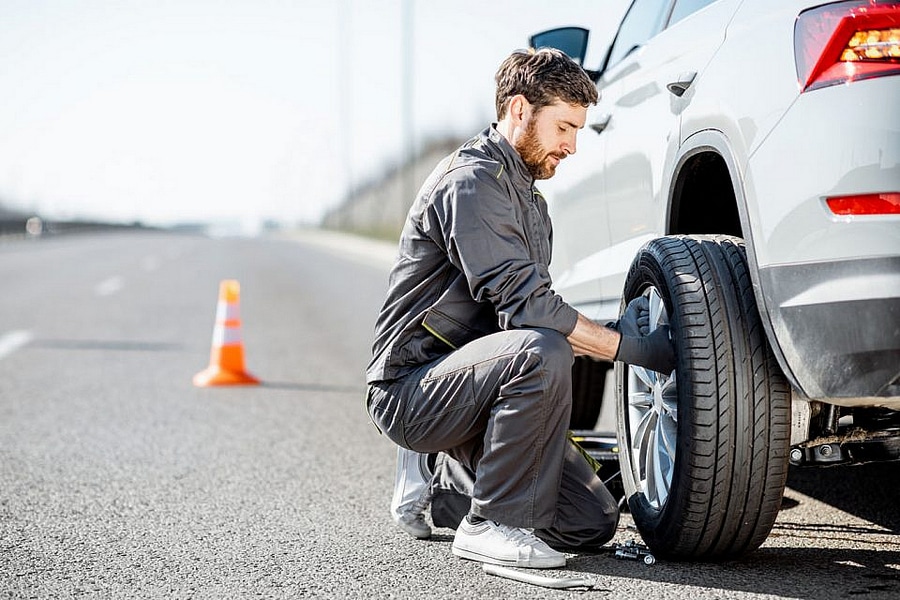When you have a flat tire or tire damage, you should normally use your spare tire as a temporary remedy. Even though it is intended for brief use, it can safely transport you to your destination or a nearby tyre shop UAE. We’ll examine possible obstacles and how far you can travel with a spare tire.
A spare tire, sometimes known as a “donut” or “compact spare,” is used to replace a flat or damaged tire temporarily. It is lighter and smaller than a typical tire, which limits its capabilities compared to a full-size tire. Awareness of the limitations and potential difficulties associated with using a spare tire is crucial.
First, its crucial to remember that spare tyres are usually not made for fast driving or lengthy distances. They are frequently inflated at a higher pressure than standard tyres and have less tread depth. This design option seeks to offer sufficient control and stability for short rides, enabling you to get to a repair facility safely.
You should limit the amount of time you spend driving on your spare tire to between 50 and 70 miles (80 and 110 kilometers). By heeding this advice, you can lessen the likelihood of more damage or failure and ensure that the spare tire isn’t utilized to its fullest extent. For specific instructions on your spare tire, it is always advised to consult your vehicle’s owner’s manual or to get in touch with the manufacturer.
Reduced traction is one of the major problems you could have while utilizing a spare tire. Light tires are more grippy than regular tires, particularly in wet or icy conditions. It could be more difficult to brake, accelerate, or turn safely if there is less traction. To secure your safety and other road users’ safety, you must modify your driving style and adopt a defensive attitude.
Changes in handling and stability can be another obstacle for you. Alterations to the vehicle’s dynamics may result from the spare tire’s reduced size and unique structure. As compared to your usual tires, you can experience more body roll, decreased responsiveness, and a rougher ride. You might need to modify your driving style to compensate for the weakened handling qualities of these alterations.
Driving with a spare tire can also impact your car’s total braking capacity. Braking distances could be longer, particularly in emergencies, because the spare tire is made to offer a different level of traction than the other tires. It is crucial to allow extra braking distance and moderate your speed accordingly to maintain control and avoid potential accidents.
Additionally, spare tires are not designed for vehicles with all-wheel drive (AWD) or four-wheel drive (4WD). A considerable imbalance could result from mounting a spare tire on one axle while keeping the other tires the same size, which could endanger the powertrain. If you have an AWD or 4WD vehicle, it is best to get professional advice and adhere to the manufacturer’s guidelines when dealing with tire-related concerns.
Tire pressure monitoring system (TPMS) sensors are frequently absent from spare tires. This implies you won’t get real-time updates on your spare tire’s pressure. Manually checking the spare tire’s pressure regularly is necessary to ensure it stays inflated properly because underinflation might cause further issues. In conclusion, using a spare tire to drive is only a temporary fix and should only be done at slow speeds and over short distances. Even though it can get you to a repair facility, you can experience several issues during this period, including decreased traction, altered handling, subpar braking effectiveness, and possible imbalances in AWD or 4WD vehicles. Always drive cautiously and put your safety and the safety of others first by getting professional assistance to repair or replace your regular tire as soon as possible.

